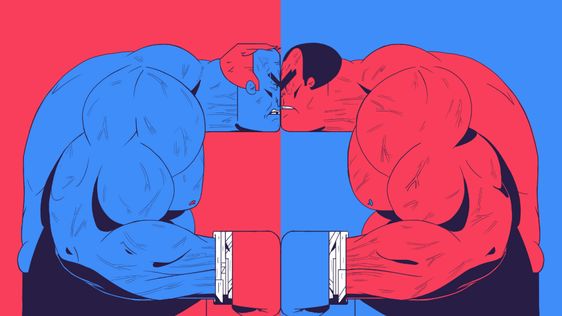Protagonist and Antagonist Explained
There are two main types of characters in any story: protagonists, and antagonists. Each one has a specific role to play, and if you want to write a compelling story, you need to understand how each one works.
Protagonists are the good guys. They’re the ones who drive the story forward, and their goal is always to achieve something positive. Antagonists are the bad guys. Their goal is always to stop the protagonist from achieving his or her goal.
Each of these characters needs to be well-developed if your story is going to be successful. In this article, we will cover everything from understanding the importance of character in writing fiction to break down the basics of your protagonists and antagonists.
- The importance of plot, character, setting, and theme in writing fiction
- What is a protagonist?
- Types of a protagonist
- Who is your protagonist?
- What are the motivations of your protagonist?
- What is the meaning of an antagonist?
- Types of an antagonist
- Who is your antagonist?
- What are the motivations of your antagonist?
- Protagonist vs Antagonist
- How do you create a believable and compelling story world for your characters?
The importance of plot, character, setting, and theme in writing fiction
In any work of fiction, the four elements of plot, character, setting, and theme are of the utmost importance. They are the backbone of the story, and without them, the story would simply fall apart. The plot is what drives the story forward and gives it shape; without a strong plot, the story would meander and ultimately go nowhere.
Characters are what bring the story to life; without well-developed characters, the story would be dry and lifeless. The setting is what gives the story a sense of place; without a strong sense of setting, the story would lack immersion and fail to transport readers to another world.
And finally, the theme is what ties all of these elements together and gives the story meaning; without a central theme, the story would lack direction and purpose. In short, all four of these elements are essential to writing a successful work of fiction with a compelling protagonist and an antagonist.
Importance of compelling characters in writing fiction
All great fiction stories have one thing in common: compelling characters. A protagonist that readers can root for and an antagonist that they love to hate. Characters that feel real, with flaws and quirks that make them human.
What is the meaning of a protagonist?
A protagonist is the central character of a story. A protagonist is also known as the “hero” or “heroine.” The protagonist is the main character who drives the plot forward and is the focus of the story. In order to write a compelling protagonist, you need to understand certain fundamentals of what is a protagonist. There are many different ways to do this, but one way is to make sure that your protagonist is relatable and likable.
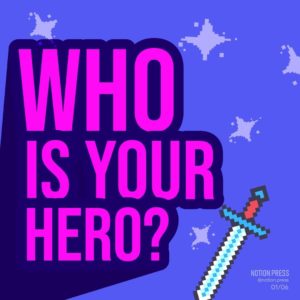
Another way is to make sure that the protagonist has a strong motivation for why they are doing what they are doing. Lastly, you want to make sure that the protagonist has a clear goal that they are trying to achieve. If you can master these things, then you will be well on your way to writing a great protagonist for your story.
Types of a protagonist
The term “protagonist” comes from the Greek word for “first actor.” In storytelling, the protagonist is the primary character, who drives the plot forward and faces the conflict head-on. The type of protagonist can vary, but some common examples include the lone hero, the group of heroes, and the anti-hero.
The Lone Hero
The lone hero is a classic archetype of the protagonist. This type of protagonist is often brave and virtuous, working alone to save the day.
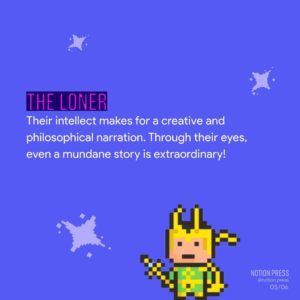
One popular example of a lone hero is Luke Skywalker from Star Wars. Set against the evil empire, Luke starts out as a farm boy with no experience in combat but emerges as a powerful Jedi Knight, able to take down Darth Vader and defeat the empire.
The Group of Heroes
In contrast to the lone hero, a group of heroes often works together to accomplish their goals.
The Avengers is a prime example of this type of protagonist. Rather than one person saving the day, it takes the combined efforts of Iron Man, Captain America, Thor, Hulk, Black Widow, and Hawkeye to defeat their foes.

Who is your protagonist?
How do you choose and identify the protagonist of your story? The protagonist is the main character, and usually the one the story is about. The protagonist is the one who has to make tough choices and face challenges.
Steps in identifying and choosing your protagonist
Sometimes it’s easy to choose who the protagonist will be. Other times, you may not be sure. Here are a few things to keep in mind when you’re choosing and identifying the protagonist of your story:
– Who is driving the action? The protagonist is usually the one driving the action or at least has a significant impact on it.
– Who has the most at stake? The protagonist is usually the one with the most at stake in the story.
– Who changes the most? The protagonist is often the one who changes the most over the course of the story.
– Who do you want to root for? The protagonist is typically someone we want to root for, or at least empathize with.

Once you’ve considered these things, you should have a good idea of who your protagonist is. Keep in mind that there can be more than one protagonist in a story, but there’s usually only one main character.
If you’re still not sure, try taking some time to get to know your characters better. Once you know them better, it’ll be easier to choose who your protagonist should be.
What are the motivations of your protagonist?
In order to create a believable and relatable protagonist, it is important to take the time to understand and define their motivations. What drives them to act in certain ways? What are their hopes and fears? Answering these questions can help to shape your protagonist’s character and make them rooted and multi-dimensional.
Understanding the possible motivations of your protagonist
Additionally, it can be helpful to look at examples of well-written protagonists in popular novels. For instance, in J.K. Rowling’s Harry Potter series, Harry is motivated by his desire to defeat Voldemort and protect those he loves. This driving force shapes his actions throughout the novel and makes him a sympathetic and compelling protagonist.

Similarly, in Suzanne Collins’s The Hunger Games, Katniss is driven by her need to survive and protect her sister. This motivation gives her the strength to endure the brutal competition, making her a relatable and inspiring protagonist. Ultimately, understanding and defining your protagonist’s motivations is essential to creating a well-rounded character that readers will connect with.
What is an antagonist?
When it comes to writing a well-rounded story, it’s important to have strong characters that readers can invest in. You need to understand what is an antagonist and who is the antagonist of your story. One way to create a compelling antagonist is to make sure they are more than just a one-dimensional villain.
An antagonist should be a fully fleshed-out character with their own motivations, goals, and conflicts. By taking the time to develop your antagonist, you can create a richer story with more depth and nuance. Additionally, it’s important to consider the different ways an antagonist can impact your story.
An antagonist doesn’t necessarily have to be physical, they could also be an emotional force that your protagonist has to contend with. Ultimately, the best antagonist is ones that feel real and relatable, even if readers don’t agree with their actions.
By understanding the meaning of an antagonist and how to write one effectively, you can craft a story that will keep readers engaged from beginning to end.
Types of antagonists
One of the most important aspects of any story is the antagonist. The antagonist is the character or force that stands in opposition to the protagonist and seeks to thwart their goals. The antagonist is the character who fuels the conflicts, without an antagonist there would be no conflict, no tension, and no drama.
There are many different types of antagonists, but they can broadly be classified into four main categories: the villain, groups of villains, villainous forces, and anti-villains.
The villain
The first and most common type of antagonist is the villain. The villain is typically a single individual who is driven by selfish motives and pursues them through nefarious means. They may be diabolical, psychotic, or simply misunderstood, but their chief goal is to defeat the protagonist and achieve their own objectives.
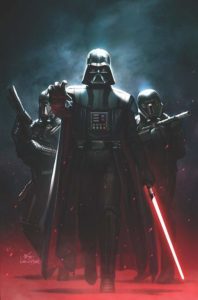
Examples of famous villains include Darth Vader from Star Wars, Amon goeth from Schindler’s list, and Norman Bates from Psycho.
Group of villains
The second type of antagonist is a group of villains. These are typically smaller in scale than the villainous forces category but can still pose a significant threat to the protagonist. They may be a band of criminals, a ruthless corporation, or even a government agency. Whatever their form, they share a common goal: to stop the protagonist from achieving their objectives.
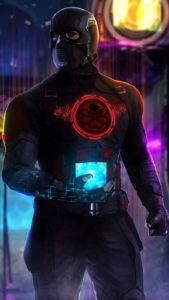
Examples of groups of villains include the mafia in The Godfather, Hydra in Captain America: The Winter Soldier, and Big Brother in 1984.
Villainous forces
The third type of antagonist is villainous forces. These are larger and more amorphous than either villains or groups of villains. They may be natural disasters, supernatural entities, or even abstract concepts like fate or destiny. Whatever their form, they present an insurmountable obstacle for the protagonist to overcome. Examples of villainous forces include earthquakes in San Andreas, Godzilla in Godzilla (2014), and Death in The Book Thief.
The anti-villain
The fourth and final type of antagonist is the anti-villain. The anti-villain is a controversial figure who occupies a moral grey area. They may be driven by noble motives but use morally questionable methods to achieve them.
Alternatively, they may be initially unsympathetic character who undergoes a redemption arc throughout the story. Anti-villains are often complex and multi-faceted characters who challenge traditional notions of good and evil. Examples of anti-villains include Magneto in X-Men: First Class, Walter White in Breaking Bad, and Javert in Les Misérables.
These are just some examples of the different types of antagonists that you might encounter in stories. Ultimately, it’s up to you as the author to decide which type is best for your story. What matters most is that your antagonist is compelling and believable and that they provide an interesting challenge for your protagonist to overcome.
The curious case of an Anti-Hero
There exists a curious type of leading character who goes beyond the basic conventions of a protagonist or antagonist. This type of leading character is what we hail as an anti-hero. The defining tropes of an anti-hero are an intriguing combination of the characteristics of both the protagonist and antagonist. To be precise, it is not all black and white when it comes to an anti-hero. It is a very grey and potentially polarising character.

There are no massive moments of heroism but there is a striking factor of rooting for the anti-hero’s mission. They are often seen battling with their own intrinsic forces of evil and can’t be epitomized in their sense of purity of evilness. Anti-heroes make for engaging stories and a tale rife with notable drama. A popular example of an anti-hero is Walter White from Breaking Bad.
Who is your antagonist?
One of the most important choices you’ll make when writing a novel is choosing your antagonist. The antagonist is the character who stands in opposition to the protagonist, usually trying to thwart her goals. A well-chosen antagonist makes for a compelling story by adding conflict, tension, and suspense.
Steps in identifying and choosing your antagonist
When choosing your antagonist, start by brainstorming a list of potential candidates. Once you have a list of possibilities, begin narrowing down your options by considering which character would create the most conflict. In addition, think about which character would be the most interesting and engaging for readers to follow.
This can be the key for you to succeed in finding your answer to what is an antagonist. Keep in mind that your antagonist can be something other than evil or villainous. In fact, sometimes the best antagonists are everyday people who are simply misguided or misunderstood. What’s important is that your antagonist presents a real challenge to your protagonist. By choosing wisely, you can create an unforgettable story that will keep readers turning pages until the very end.
What are the motivations of your antagonist?
In order to create a strong antagonist in a story, it is essential to first understand what motivates them. What drives them to do the things they do? Is it power? Money? Revenge? In many cases, it is a combination of factors.

Once you have a clear understanding of your antagonist’s motivations, you can begin to define their character and craft their story arc.
How to define the motivations of your antagonist?
There are a few things to keep in mind when defining motivations. These motivations differentiate between the protagonist and antagonist. First, motivations should be clear and relatable. We should be able to understand why the antagonist is doing what they’re doing, even if we don’t agree with it.
Second, motivations should be consistent. If an antagonist’s motivations change mid-story, it will confuse and frustrate readers. Finally, motivations should be compelling.
The motivations of the antagonist should be strong enough to drive the plot forward and keep readers invested in the story. Some of the most popular examples of strong motivations include power, greed, and revenge. These motivations are universally understood and often easy to empathize with, even if we don’t agree with them.
Other examples include fear, love, and obligation. While these motivations are not always as clear-cut as power or greed, they can still be incredibly effective if used correctly. Ultimately, it is up to the writer to decide which motivations will work best for their story and their characters.
Protagonist Vs Antagonist
One of the most central conflicts in literature is that of the protagonist and the antagonist. This is the conflict between the main character, or protagonist, and the opposing force, or antagonist. The conflict between protagonists and antagonists drives the story forward and can be very entertaining for readers.

One of the things that makes the protagonist and antagonist conflict so engaging is the dramatic elements that are often at play.
Dramatic elements of the great conflict
These elements can include reversals, surprises, and moments of high tension. These moments can create a sense of suspense and anticipation that keeps readers on the edge of their seats.
By understanding the dramatic elements of the Protagonist vs Antagonist conflict, we can see why this protagonist and antagonist conflict is so central to many stories and why it is so entertaining for readers.
Which characters change and grow throughout the story?
In any story, it is crucial to determine which characters change and grow throughout the narrative. This is known as a character arc. A character arc typically charts the development of a character from the beginning to the end of a story, revealing how they change and grow in response to the events that unfold. The character arc applies to protagonists and antagonists.
The benefits of a well-crafted character arc
A well-crafted character arc for the protagonist and the antagonist can add a great deal of depth and dimension to a character, making them feel more real and relatable to readers. A character’s backstory can also play a role in their character arc. By understanding a character’s history, motivations, and fears, readers can further appreciate the choices the protagonist and antagonist make and the journey they take over the course of a story.
How do you create a believable and compelling story world for your characters?
World-building is an important part of creating a believable and compelling story world for your protagonists and antagonists. It involves creating the setting and backstory for your story and developing the rules and laws that govern your world.
Basic tips for world-building
Without a well-developed world, the protagonist and an antagonist will feel flat and your story will lack direction. Here are some tips for world-building:
- Start with the basics: What is the geography of your world? What is the climate like? What kind of buildings and landforms is present?
- Develop the history of your world: What events have shaped the world? How does it influence the protagonist and an antagonist? How did the different factions and races come to be?
- Create the rules that govern your world: What are the magical laws in place? What technology is available? How do social customs work?
- Flesh out your world with details: Populate your world with interesting people, places, and things besides your protagonist and an antagonist. The more specific you can be, the more believable your world will be.
- Always be prepared to revise: As you write, you may find that certain aspects of your world don’t work as well as you thought they would. Don’t be afraid to make changes to ensure that your world is believable and compelling for both you and your readers.

